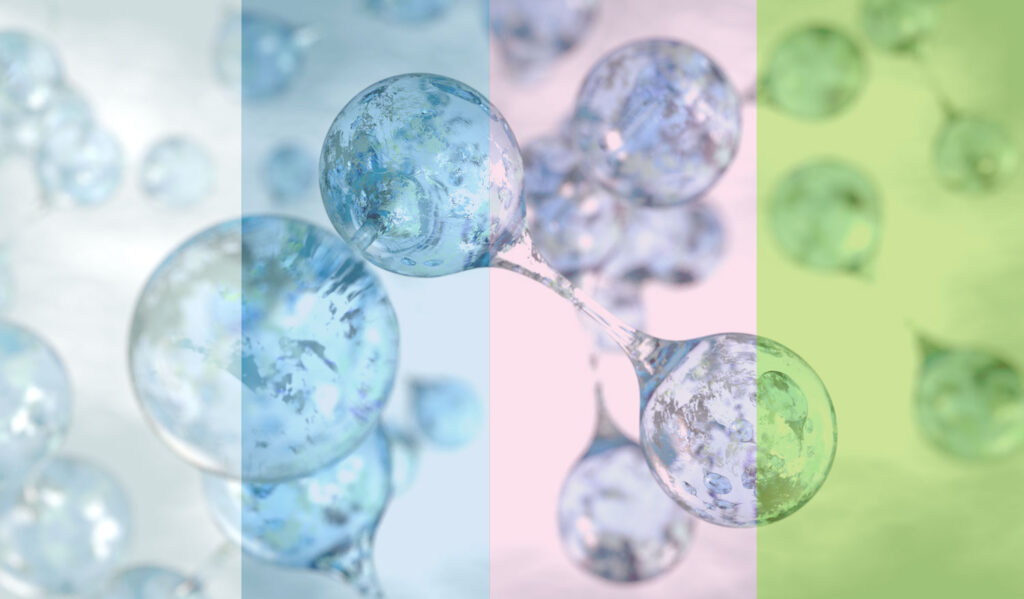Grey Hydrogen: The Most Common, but Not the Most Eco-friendly
Let’s start with grey hydrogen, the type most commonly found today. It’s produced from natural gas through a process that unfortunately releases a lot of CO2. To give you an idea, for every ton of grey hydrogen produced, about 10 tons of CO2 are generated. Needless to say, it’s not exactly a friend of the climate…
Blue Hydrogen: Grey Hydrogen Trying to Go Green (Well, Almost)
Blue hydrogen is like grey hydrogen with a conscience. It’s produced in the same way as grey hydrogen but with one key difference: the CO2 emissions are captured and utilized or stored underground. A great improvement, right? But be careful, the effectiveness of blue hydrogen depends on how well the CO2 is captured and stored. If the CO2 escapes, the benefits of blue hydrogen disappear too…
Green Hydrogen: The Eco-friendly Champion
Now here’s the hydrogen that environmentalists dream of: green hydrogen. It’s produced through renewable resources such as electrolysis of water, a process that uses electricity to split water into hydrogen and oxygen. But for it to truly be “green,” the electricity used must come from renewable sources like solar or wind. The result? Zero CO2 emissions. The catch? It’s still quite expensive to produce. But with time and investment, who knows, it would become the norm!
What About the Other Colors?
Hydrogen comes in a whole rainbow of colors! Here’s a quick overview of the others:
- Yellow: Produced using electricity from renewable sources like solar energy, and also from the energy mix provided by the electrical grid. It reflects the use of intermittent and mixed energy sources to generate hydrogen, without being limited to one renewable source.
- White: Naturally occurring hydrogen, found in some underground pockets. It’s still very rarely exploited.
- Brown and Black: Produced from coal and lignite. Needless to say, these are far from eco-friendly!
- Pink: Produced through electrolysis of water using nuclear energy.
- Turquoise: This hydrogen is made by methane pyrolysis, which generates solid carbon instead of CO2. Not yet widely used, but promising!
Why Is This Important?
These colors aren’t just for show. They help you understand the environmental impact of the hydrogen you’re using. If we really want to reduce our carbon footprint, we need to focus on green hydrogen. But for now, blue hydrogen could be a good compromise, provided carbon capture technologies are effective.
Conclusion
Hydrogen has enormous potential to help us build a cleaner future. But not all colors are created equal. By betting on green hydrogen, we could truly make a difference. So, the next time you hear about hydrogen, you’ll know that its color really matters. And who knows, maybe it will influence your future energy choices!
HSL is committed to maximizing the use of renewable sources at every step, whether for electricity, materials, hydrogen, or heat, to minimize the ecological footprint of its vector.


